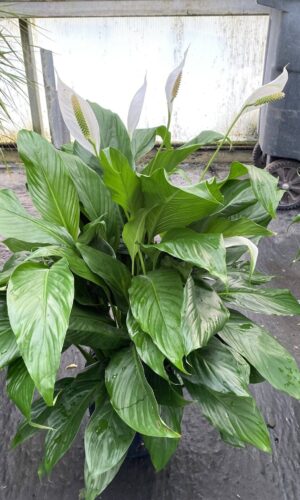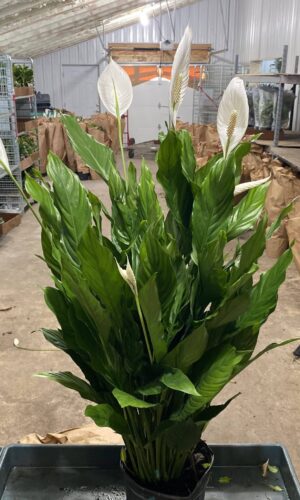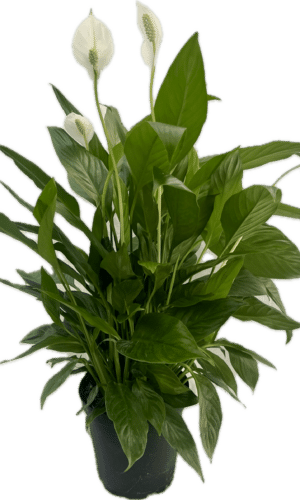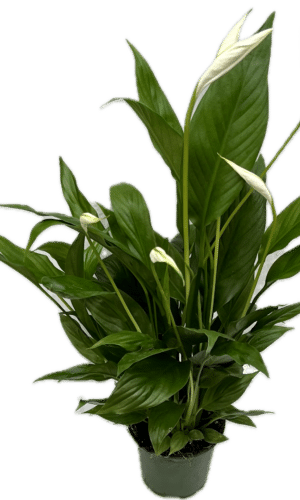Peace Lily plants are beautiful indoor houseplants with large, glossy, oval, dark green leaves and impressive white “spathes” (flowers) that last for weeks. Spathes may be green which reminds us that they are really modified leaves. NASA lists the Peace Lily as one of the best plants to clean the air of harmful toxins such as benzene, formaldehyde, and carbon monoxide.
Peace Lily plants do well in low, medium, or indirect bright light. Too much light causes the leaves to fade and lose their vibrant dark green color. Too little light and Peace Lily plants can’t develop flowers. Direct sunlight burns the leaves.
Allow the top 50% of the soil to dry out before watering. If the leaves of a Peace Lily severely droop, yellow leaves develop once it’s watered. Leaves turn a blackish brown from over- watering.
Peace Lily plants grow well in 65°-85°F (18.3°-29.4°C). High humidity is a plus but not a necessity.
As Peace Lily plants mature, they produce more flowers. Brighter light also encourages more blooms.
Peace Lily plants may rarely get Aphids, spider mites, and Mealy Bugs.
Since Peace Lily plants prefer a humid environment, leaf spot, and other bacterial and fungal plant diseases can be a problem. Keeping the leaves dry, providing good air circulation around the plant, and avoiding overly wet soil helps prevent plant diseases.
A Peace Lily should not be moved to the next size plant pot until the roots of the plant have almost filled the existing pot.
Once the flowers fade, prune the flower and its stem at the soil line. Every Peace Lily flower has it’s own stem so that stem will not re-bloom. Pruning the flowers and stems helps the plant look better and encourages more flowers. Brown or yellow leaves should also be pruned at the base of their stem. If you want to trim the brown or yellow tips on the leaves of a Peace Lily, rather than removing the entire leaf, use a sharp wet scissors to make an angled cut below the discolored area.
NASA recommends a Peace Lily as an excellent plant to clean the air of harmful chemicals.




